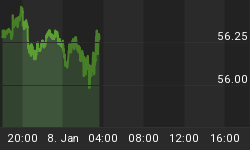9/1/2010 9:14:58 AM
The equities markets moved down to support and then up to resistance but ended up mostly unchanged...
Recommendation:
Take no action.
Daily Trend Indications:

- Positions indicated as Green are Long positions and those indicated as Red are short positions.
- The State of the Market is used to determine how you should trade. A trending market can ignore support and resistance levels and maintain its direction longer than most traders think it will.
- The BIAS is used to determine how aggressive or defensive you should be with a position. If the BIAS is Bullish but the market is in a Trading state, you might enter a short trade to take advantage of a reversal off of resistance. The BIAS tells you to exit that trade on "weaker" signals than you might otherwise trade on as the market is predisposed to move in the direction of BIAS.
- At Risk is generally neutral represented by "-". When it is "Bullish" or "Bearish" it warns of a potential change in the BIAS.
- The Moving Averages are noted as they are important signposts used by the Chartists community in determining the relative health of the markets.
Current ETF positions are:
In Cash.
Daily Trading Action
The major index ETFs opened lower and tested lower for the first fifteen minutes before reversing to move higher until around noon EDT. The dip that took place during the lunch hour was countered by a rise to a lower high around 2:00pm and the bears then drove the markets lower to achieve a higher low. The bulls controlled things into the close forcing the major indexes to close little changed, with the noted exception of the NASDAQ-100, which lost about one third of one percent on the day. The Russell-2000 (IWM 60.18 -0.12) lost a fifth of one percent leaving behind a doji candlestick. The Semiconductor Index (SOX 307.49 -5.09) wasn't so fortunate as sellers were in charge causing a loss of more than one and a half percent to its lowest close of the year and below its 400-Day Moving Average (DMA) for the first time in more than one year. The Bank Index (KBE 21.60 _0.21) gained one percent on the day and the Regional Bank Index (KRE 21.12 +0.18) gained most of one percent as well. The 20+ Yr Bonds (TLT 108.56 +1.19) rallied once again but is below its recent high TLT appears ready to capitulate which could power equities higher. NYSE volume was average with 1.324B shares traded. NASDAQ share volume was average with 2.057B shares traded.
In addition to the FOMC releasing its minutes, there were three economic reports of interest released:
- Case-Shiller 20-city Index (Jun) showed home prices increased +4.23% versus an expected +3.1%
- Chicago PMI (Aug) came in at 56.7 versus an expected 57.0
- Consumer Confidence (Aug) came in at 53.5 versus an expected 50.0
The first report was released a half hour before the open. The second and third reports were released fifteen minutes and thirty minutes into the session.
There was little reaction to the Fed minutes from the August 10th meeting. Since Fed Chairman Ben Bernanke spoke on this subject last week, the slowing of growth in recent months and concerns about potential downside risks in the minutes didn't do a lot to derail end of month buying (window dressing).
Six of the ten economic sectors in the S&P-500 moved higher led by Telecom (+1.1%) and Financials (+0.9%). Tech (-0.6%), Health Care (-0.4%), Industrials (-0.3%), and Energy (-0.2%) were the losing sectors.
Implied volatility for the S&P-500 (VIX 26.05 -1.16) fell more than four percent and implied volatility for the NASDAQ-100 (VXN 27.45 -0.44) fell more than one percent. It is important to note that implied volatility is dropping markedly while the major indexes are flat or down.
The yield for the 10-year note was unchanged closing at 2.55. The price of the near term futures contract for a barrel of crude oil fell $2.76 to close at $71.94.
Market internals were mixed with advancers leading decliners 6:5 on the NYSE while decliners led advancers by several percent on the NASDAQ. Up volume led down volume 7:4 on the NYSE while down volume led up volume 2:1 on the NASDAQ. The index put/call ratio fell 0.46 to close at 1.15. The equity put/call ratio rose 0.16 to close at 0.74.
Commentary:
Tuesday's trading saw trading volume increase to healthy levels. Even though the major indexes closed flat to lower for the day, the major indexes closed higher than their gap down opens. Once again, equities are poised to run higher. The bank index and regional bank index also closed notably higher supporting a rise for the major indexes. Notably, the semiconductor index (SOX) achieved another new low for the year and moved lower than its gap down open. It closed below its 400-Day Moving Average for the first time in more than one year. That is somewhat bothersome but we will give it a day or two to see if this remedies itself.
The markets appear ready to break out of their funk and with end of month window dressing expected to carry over into the first month of the new year, we wouldn't be surprised to see a move higher on Wednesday. We would like to position long for a move higher, but would only do so on a gap down open. This doesn't appear likely so we will hunker down for another day.
We hope you have enjoyed this edition of the McMillan portfolio. You may send comments to mark@stockbarometer.com.
















